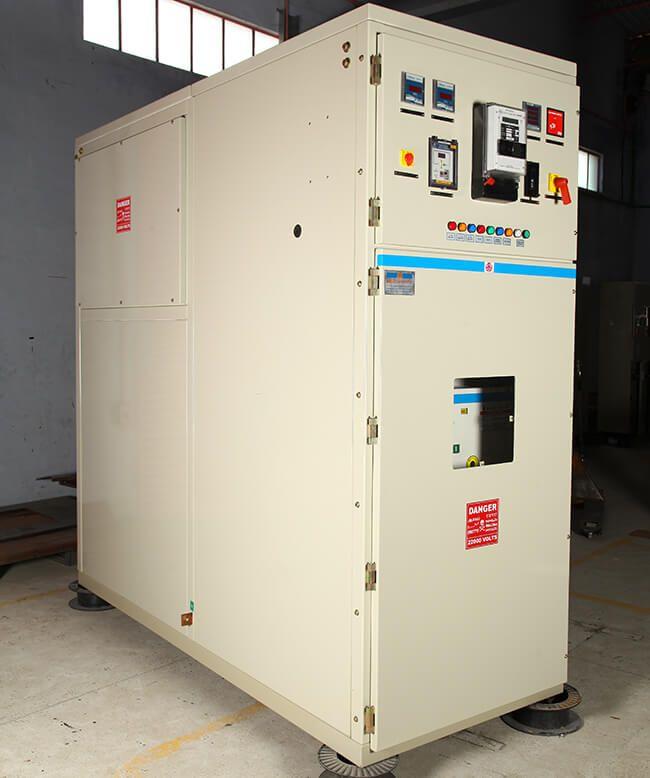Vacuum Interrupter: The Heart of Modern Circuit Breakers

I. What Is a Vacuum Interrupter?
-
Fixed and Movable Contacts: The current-carrying elements that open and close the circuit. -
Vacuum Chamber: A hermetically sealed glass or ceramic envelope filled with an ultra-high vacuum, preventing ionized gas from sustaining arcs. -
Metal Bellows: A flexible, corrosion-resistant component that allows the movable contact to move axially while maintaining the vacuum seal.
II. How Vacuum Interrupters Work: The Science of Arc Quenching
1. Contact Separation and Arc Initiation
2. Arc Confinement in Vacuum
3. Rapid Arc Extinction
III. Advantages of Vacuum Interrupters Over Traditional Technologies
1. Environmental Friendliness
-
Zero Emissions: Unlike SF₆ (a potent greenhouse gas with 23,500× the GWP of CO₂) or oil (which poses fire and pollution risks), vacuum interrupters use no hazardous materials. -
No Leakage Risks: Sealed for life (typically >30 years), they eliminate the need for gas replenishment or monitoring.
2. Compact and Lightweight
-
Vacuum interrupters occupy 70–80% less space than oil or SF₆ breakers of equivalent rating, enabling smaller substations and switchgear. -
Their lightweight design simplifies installation and reduces material costs.
3. High Reliability and Longevity
-
No Wear from Arcing: Contact erosion is minimal (typically <0.1mm per operation) due to the self-cleaning effect of the vacuum. -
Low Maintenance: No oil filtration, gas pressure checks, or desiccant replacement is required. Most units operate for 10,000–30,000 cycles without major servicing.
4. Superior Arc-Quenching Performance
-
Fast Interruption: Capable of handling fault currents up to 63kA (and beyond in advanced designs) with minimal contact damage. -
High Dielectric Recovery: The vacuum’s insulation strength recovers rapidly after arc extinction, preventing re-strikes.
IV. Applications of Vacuum Interrupters
1. Medium-Voltage Circuit Breakers (12kV–40.5kV)
-
Industrial Plants: Factories, refineries, and mining operations rely on vacuum breakers for motor control, feeder protection, and transformer switching. -
Utility Substations: Distribution networks use vacuum circuit breakers for load break and fault isolation.
2. Switchgear and Reclosers
-
Gas-Insulated Switchgear (GIS): Vacuum interrupters are integrated into compact GIS designs, replacing SF₆-based components for environmentally friendly alternatives. -
Automatic Circuit Reclosers (ACRs): Used in rural electrification and overhead lines to automatically restore power after transient faults.
3. Renewable Energy Integration
-
Solar and Wind Farms: Vacuum breakers protect inverters, transformers, and distribution lines in decentralized energy systems. -
DC Interrupters (Emerging): Research is underway to adapt vacuum technology for DC applications (e.g., HVDC grids), where arc quenching is more challenging.
V. Technological Innovations and Future Trends
1. Higher Voltage Ratings
-
Traditional vacuum interrupters are limited to 38kV, but advanced designs (e.g., multi-break configurations, optimized contact materials) are pushing ratings toward 72.5kV and beyond.
2. Enhanced Contact Materials
-
Copper-Chromium (CuCr) Alloys: The gold standard for contacts, balancing vaporization properties and arc erosion resistance. New composites (e.g., CuCr with tungsten additives) improve durability for high-current applications.
3. Integration with Smart Grids
-
Embedded sensors (e.g., contact wear monitors, vibration detectors) enable predictive maintenance and real-time health monitoring. -
Vacuum breakers are compatible with digital protection relays, supporting automated grid management.
4. Sustainability Focus
-
Sealed-for-Life Design: Eliminates the need for gas handling, reducing lifecycle carbon footprints. -
Recyclable Components: Metal and ceramic parts can be reclaimed at end-of-life, aligning with circular economy principles.
Conclusion
Pesquisar
Categorias
- Art
- Causes
- Crafts
- Dance
- Drinks
- Film
- Fitness
- Food
- Jogos
- Gardening
- Health
- Início
- Literature
- Music
- Networking
- Outro
- Party
- Religion
- Shopping
- Sports
- Theater
- Wellness
Leia mais
Health Plan Auditing Details Explained
In the past, claim audits were often viewed as merely another regulatory requirement to fulfill,...
Compact Design Meets High Precision: New Cross-Roller Guide by Yinhe Transmission
Precision industries are constantly seeking ways to reduce equipment size without sacrificing...
Precision Aquaculture Market : Trends, Forecast, and Competitive Landscape 2025 –2032
This Precision Aquaculture market report has been prepared by considering several...
Military Embedded Systems Market Share, Size and Growth 2034
Military embedded systems are specialised computer systems that are integrated into larger...
Global Deepfake AI Market Statistics and Revenue Forecast 2032
The Deepfake AI Market is undergoing exponential growth, driven by advances in artificial...



